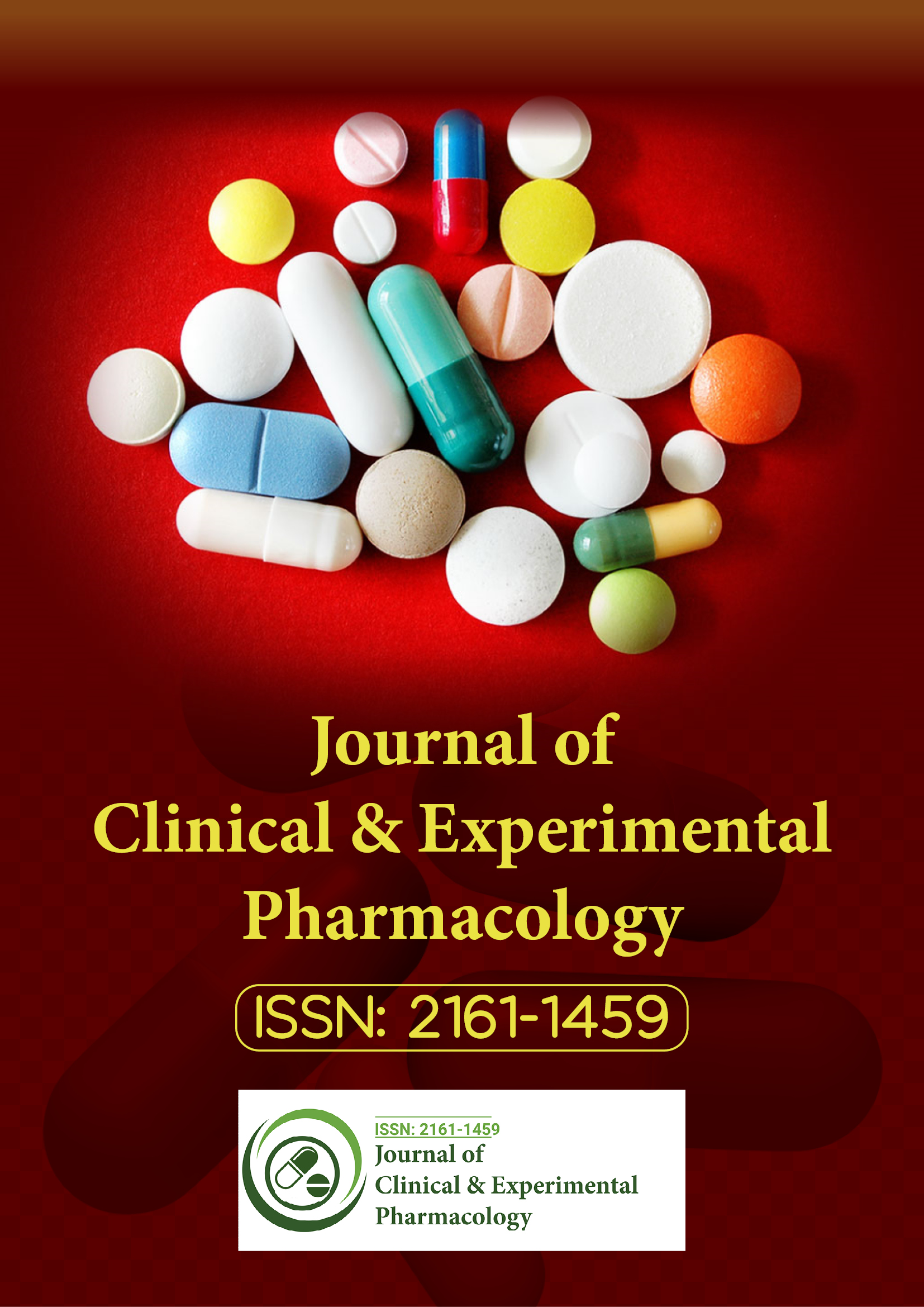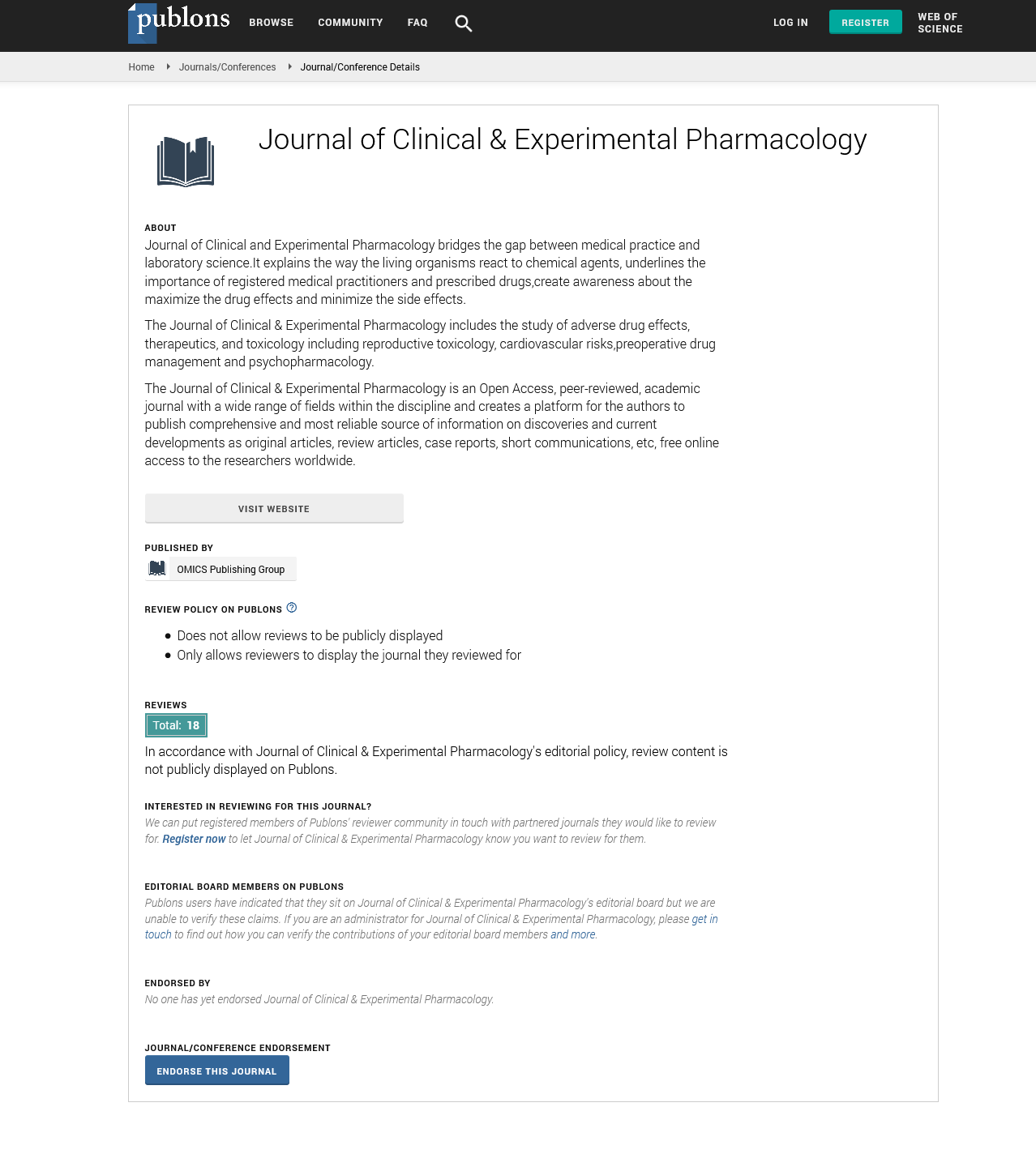Indexed In
- Open J Gate
- Genamics JournalSeek
- China National Knowledge Infrastructure (CNKI)
- Ulrich's Periodicals Directory
- RefSeek
- Hamdard University
- EBSCO A-Z
- OCLC- WorldCat
- Publons
- Google Scholar
Useful Links
Share This Page
Journal Flyer

Open Access Journals
- Agri and Aquaculture
- Biochemistry
- Bioinformatics & Systems Biology
- Business & Management
- Chemistry
- Clinical Sciences
- Engineering
- Food & Nutrition
- General Science
- Genetics & Molecular Biology
- Immunology & Microbiology
- Medical Sciences
- Neuroscience & Psychology
- Nursing & Health Care
- Pharmaceutical Sciences
Using a new vinyl sulfone as a promising therapeutic strategy to prevent microglia-mediated inflammation in Alzheimer's disease
World Congress on Pharmacology
July 20-22, 2015 Brisbane, Australia
Dora Brites, Falcao A S, Lidonio G, Vaz A R, Santos M and Moreira R
Posters-Accepted Abstracts: Clin Exp Pharmacol
Abstract:
AlzheimerÔ??s disease (AD) is the most common neurodegenerative disorder in the elderly, characterized by amyloid-beta (Abeta) peptide deposits and chronic inflammation. Microglia was shown to be activated in the early stage of AD and the alarming High-Mobility Group Box 1 (HMGB1) to mediate neuroinflammation. We aimed to investigate whether vinyl sulfone (VS) with anti-cathepsin S, B and L activity was able to inhibit the expression of HMGB1 and if so, to modulate microgliarelated inflammatory signaling pathways. The microglia cell line N9 was incubated with 1 ╬╝M Abeta alone or in the presence of 20 ╬╝M VS, for 24 h. Cell viability was assessed by propidium iodide staining and neuroinflammation by determining the activity of matrix metalloproteinases (MMPs)-9 and MMP-2, the expression of HMGB1, as well as its toll-like receptor-4 (TLR-4). We additionally evaluated the microRNA (miR)-155 (up-regulated by HMGB1) and miR-146a (up-regulated by IL- 1╬▓), which are associated with inflammation. Data showed that Abeta increased microglial necrotic death (1.9-fold, p<0.01), MMP-2 and MMP-9 activation (~1.6-fold, p<0.01), as well as HMGB1 expression (>2.5-fold, p<0.01, protein/mRNA), without causing alteration on the TLR4 protein expression. Abeta induced the expression of miR-155 (1.8-fold, p<0.05) and marginally of miR-146 (1.3-fold). Interestingly, VS was able to prevent Abeta-related loss of microglia viability (p<0.01) and its immunostimulation, sustaining the values of MMP-2, MMP-9, HMGB1 and miR-155 (all p<0.05), including miR-146, at control levels (without Abeta). Our study reveals that VS prevents Abeta-induced microglia dysfunction and inflammation and suggests its therapeutic potential in neuroinflammatory diseases.

